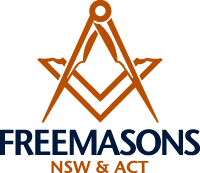
The disappearing islands of Sydney Harbour

The islands of Port Jackson were mapped in the first weeks of settlement. They had to be: the sea, the harbour and the rivers were vital to the survival of the colony.
So the harbour was, is, and will remain as always ... Yes?
No, actually. In 1788 Captain Phillip’s maps show 14 islands. Now there are eight.
The missing six have not been sold to overseas investors even though real estate has ever been an object of attainment in modern society.
Bennelong Island, Garden Island, Darling Island, Glebe Island and Berry Island, have been linked to the shore. Spectacle Island was originally two islands which have been joined, forming one piece of land.
Chances are that you have visited some of these islands without knowing it.
As he sailed into Port Jackson, Phillip would have seen what was to become Garden Island.
Garden Island
Garden Island is so-called because it was the colony's first food source when gardens were established on the island to feed the colony on 27 January 1788. Graffiti there by First Fleeters is believed to be the oldest colonial graffiti in Australia. Sandstone fortifications, built on the island during the 1820s to protect Sydney from a much-feared Russian attack, also survive. From 1884 the island was developed by the Colonial Government for the exclusive use of the Royal Navy which had stationed a squadron of ships in Sydney. Several fine buildings had been completed when the island was handed over to the Admiralty in 1896. In 1913 the Royal Navy transferred control to the RAN. The Captain Cook Graving Dock, built during the war and first used in 1945, joined the island to the mainland.
Goat Island
From the 1830s Goat Island was the site of the Queen’s Magazine and also a base for the Water Police. The explosives were finally moved in 1900; a year later the island became the headquarters of the Sydney Harbour Trust, and later the Maritime Services Board. After the 1960s these activities wound down or were transferred elsewhere. Some of the facilities on the island are now leased for commercial ship servicing and repair.
Confusingly, some early maps of Sydney Harbour show the current Goat Island with the name Cockatoo Island, whilst the current Cockatoo Island is named Banks Island. However by the late 1820s the two islands had received their current names.
Spectacle Island
Spectacle Island lies in the main channel of the western section of the harbour, upstream of the Harbour Bridge, adjacent to Drummoyne. It was originally two islands, one was known as Dawes Island.
The island is historically significant as it is the oldest naval explosives manufacturing and storage complex in Australia. Today, the island is a depository of heritage items of the Royal Australian Navy and also is the home of the training ship Sydney, a unit of the Australian Navy Cadets.
Glebe Island
The name derives from the island’s being part of a grant of land made to the colony’s first chaplain, Richard Johnson, in 1789. Sydney’s first public abattoirs opened there in 1860 when a causeway was built. Later the island became a part of the mainland. Sydney’s first container berths were on Glebe Island. Both the grain and container activities have now moved elsewhere and the Glebe Island wharves are now mainly used by car-carriers. The grain silos remain, but are no longer in use.
Berry Island
The island is named after Alexander Berry, Scottish doctor, ships’ master and mer- chant. From 1820 he owned the island which he joined to the mainland by a stone causeway over the mudflats. In 1906 it passed to the New South Wales Government and eventually became a public recreation reserve. During the 1960s the land between the island and the mainland was reclaimed and made into a grassed area.
Bennelong Point
Bennelong Point was once Bennelong Island. For a brief period in 1788, this relatively isolated protrusion into Port Jackson was called Cattle Point as it was used to confine the few cattle and horses that had been brought from Cape Town by Phillip. In 1819 Governor Macquarie built a substantial fort on the island and gave it his name. The island was joined to the main- land by a causeway and became Bennelong Point. The fort was demolished in 1902 and a tram depot which was erected in its place was in use until the early 1950s. In 1954 Bennelong Point was selected as the site for the Sydney Opera House.
In the past 225 years nearly half of Sydney Harbour’s islands have ‘disappeared’. Which will be next?
Article extracted from Freemason magazine, March 2014, pages 8 and 9.


